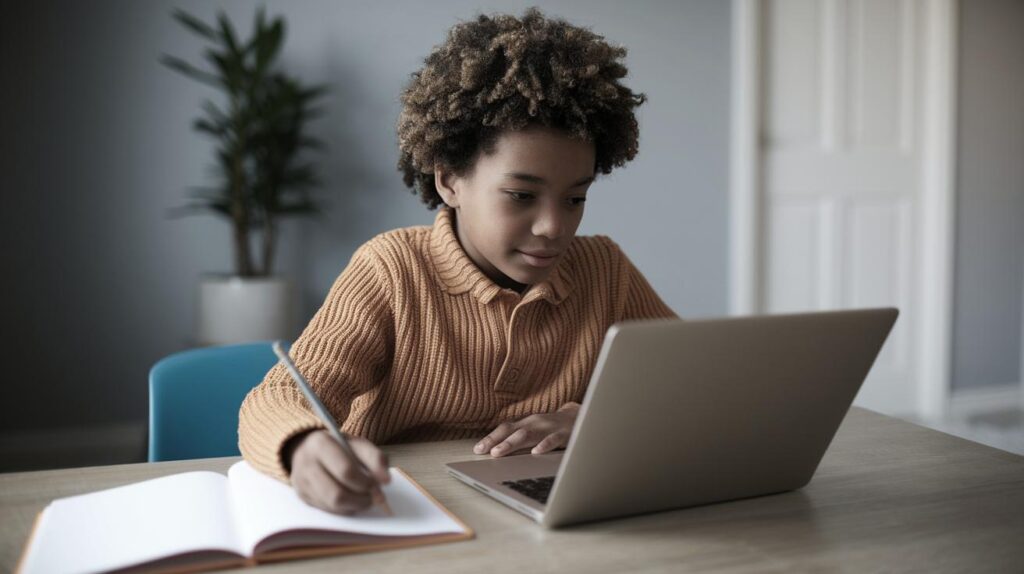Balancing Screen Time and Study Time for Children
In today’s digital age, children are exposed to screens more than ever. From educational apps to entertainment, screens offer countless opportunities for learning and fun. However, it’s crucial to strike a balance between screen time and study time to ensure holistic development. This blog post explores five key strategies for parents and guardians to help their children maintain a healthy balance. By determining when and how screens are used, carefully selecting content, setting screen-free breaks, managing bedtime routines, and being mindful of the role of technology, families can create a supportive environment that promotes both learning and well-being.
Determine when, where and how screens are used
Setting boundaries on screen usage can help children understand the difference between productive and leisurely screen time. Establish clear rules about when screens can be used, such as during certain times of day or for specific purposes like homework or educational games. By having these guidelines in place, children can develop time management skills and learn to prioritize their tasks.
It’s also beneficial to designate specific areas in the home as screen-free zones, such as dining areas or bedrooms. Encouraging the use of screens in shared spaces allows for better monitoring and interaction between family members, fostering both accountability and communication. Discuss with your children the importance of these designated spaces and involve them in creating these family guidelines, which can enhance their understanding and adherence.
Be selective about TV and video content
The quality of content consumed is as important as the amount of screen time. Parents should take an active role in choosing educational and age-appropriate programs or videos. This choice can significantly impact a child’s cognitive development and values. By watching programs together, you can engage with your child on the material, further enriching their viewing experience.
Involve your children in selecting some of what they watch to give them a sense of choice within limits you set. Explain why some content is more beneficial than others, emphasizing the value of informative content over purely entertaining media. Utilize parental controls and streaming service features to help them make better choices and reinforce positive viewing habits.
Set breaks for screen-free moments or activities
Breaks are essential for maintaining a child’s attention span and overall health. Encourage your children to take regular breaks from screens, ideally every 30 to 60 minutes. These breaks should include activities such as playing outside, physical exercises, reading, or engaging in creative play. Such activities promote physical health and stimulate imagination and social skills.
Consider setting a family schedule that alternates between study sessions and playtime. Specific times for screen-free activities can help establish a routine that children come to expect and appreciate. Highlight the enjoyment and relaxation these activities provide, showing them the benefits of a balanced lifestyle.
Avoid screen time before bed
Using screens before sleeping can interfere with a child’s sleep patterns due to the blue light emitted by digital devices, which hinders the production of the sleep hormone melatonin. Encourage a routine that swaps screen activities for calming pre-bedtime rituals such as reading books or listening to soft music.
Set a ‘digital curfew’ an hour before bedtime, where all screens are turned off. This prepares the mind and body for sleep, ensuring that children get sufficient rest crucial for growth and learning. Discuss with your children the science behind good sleep hygiene to help them understand the importance of this habit.
Manage your expectations of technology
It’s essential for parents to have realistic expectations of what technology can achieve in a child’s education. While digital devices can be excellent learning tools, they are not substitutes for hands-on experiences and interactive learning. Balance your child’s education with a mix of digital and traditional methodologies to provide a well-rounded experience.
Teach children that technology is a tool to be used thoughtfully, not something that should dominate their lives. Encourage questions and discussions about what they learn online, and provide guidance to enhance their critical thinking skills. This approach helps children to see technology as a means to an end, rather than an end itself.
Lessons Learned
| Strategy | Key Points |
|---|---|
| Determine When, Where and How Screens are Used | Set specific times and areas for screen use; encourage usage in shared spaces. |
| Be Selective About TV and Video Content | Choose educational content; involve children in selecting programs within limits. |
| Set Breaks for Screen-Free Moments or Activities | Encourage physical and creative activities to promote health and imagination. |
| Avoid Screen Time Before Bed | Implement a digital curfew; foster bedtime routines to ensure adequate sleep. |
| Manage Your Expectations of Technology | View technology as a tool, not a sole educational resource; mix learning methods. |


